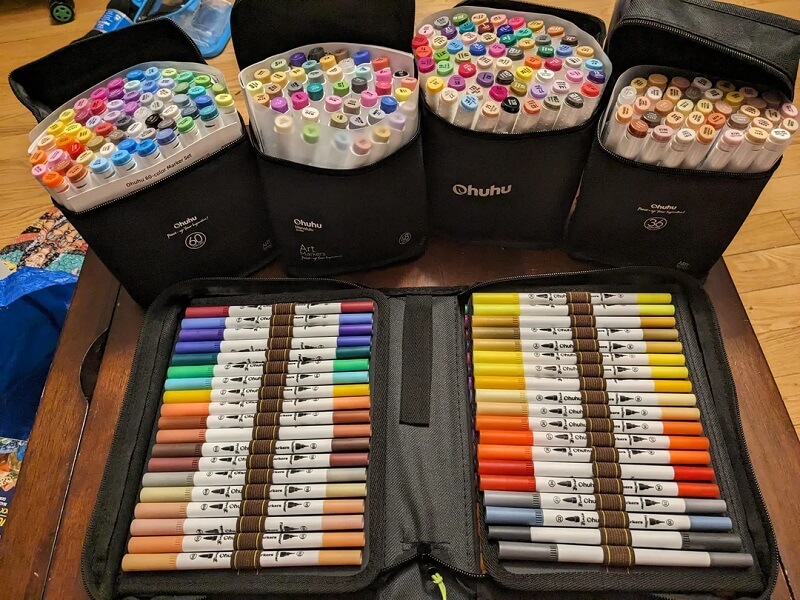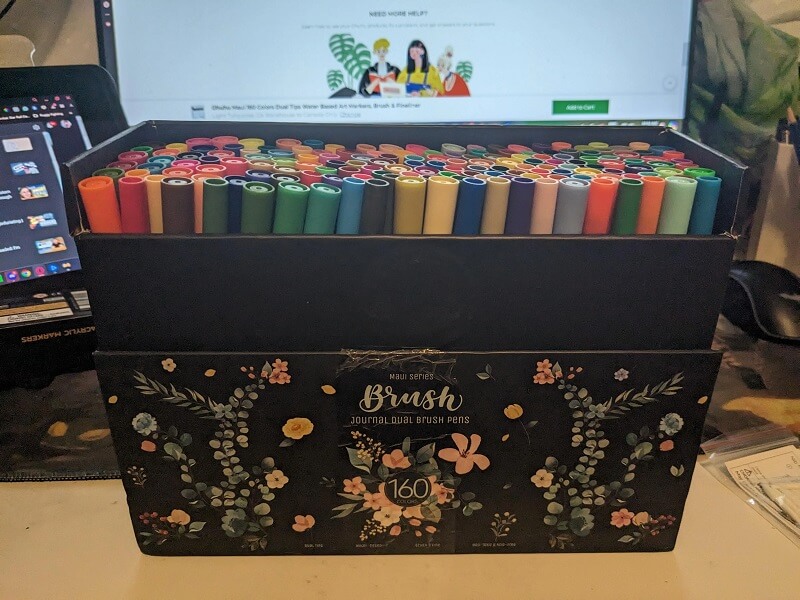An artist shopping in a bin store of overstock and returned items was overjoyed to find brand-new, high-quality alcohol markers for less than half their usual price — an "artist's dream," they wrote.
They posted photos of their haul in the subreddit r/ThriftStoreHauls with the caption, "Starting to love bin stores cause I'm likely one of the few that know that alcohol markers are expensive … saved myself 370.60$!"
"That's insane! So happy for you OP (and slightly jealous)," one person wrote.


Others were similarly enthused. "What an insane grab! Absolutely amazing! I'm so happy for you," one commented, to which OP replied, "I'm ecstatic as well!"
Whether it's saving money on art supplies, vintage cameras, or record players, bin stores and thrift shops are a great place to fuel your hobbies for a bargain price. They're particularly great for clothing aficionados; thrift stores are gold mines for discounted designer clothes, bags, and accessories. Dedicated thrift shoppers also often stumble across bonus finds, like cash stuffed inside a pocket — meaning that thrift shopping isn't just a great deal, it can even be profitable.
Secondhand shopping is also a more cost-effective approach for buying everyday items, such as kitchen wares or furniture. Shoppers regularly find unbelievable steals, like a KitchenAid standing mixer for just $8 or a Le Creuset Dutch oven for more than 85% off the regular price.
The thrift community is also renowned for its creativity in repurposing items; shoppers have been known to use vintage sheets as tablecloths, upcycled mop buckets as garden planters, and more.
By being creative with their spending and finding amazing deals, dedicated thrift shoppers save an average of $1,700 per year. And not only are they saving money, they're helping keep those dollars out of the toxic fast fashion industry, preventing the accrual of more waste.
Fast fashion produces 100 million tons of textile waste every year, according to Earth.org, 99% of which ends up in landfills and in the ocean. And these clothes don't just sit around — they're often burned, which releases toxic chemical pollutants.
🗣️ What's your primary motivation in shopping at thrift stores?
🔘 Cheaper clothes 🤑
🔘 Trendier items 😎
🔘 Reduced environmental impact 🌎
🔘 I don't thrift 🚫
🗳️ Click your choice to see results and speak your mind
For all of these reasons, more and more shoppers are choosing to thrift or visit a bin store instead of buying new. According to a report from Statista, the secondhand clothing market is growing exponentially around the world, with the market forecasted to reach $84 billion by 2030 — at which point it will officially outpace toxic fast fashion.
Join our free newsletter for easy tips to save more, waste less, and help yourself while helping the planet.









